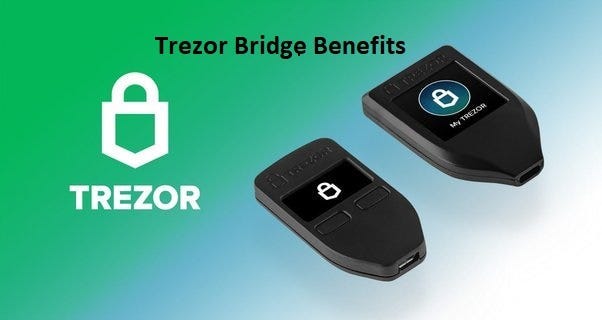🔗 Trezor Bridge — Connect Your Trezor Device Quickly
Trezor Bridge is the small, trusted piece of software that sits between your Trezor hardware wallet and the web apps or desktop software you use to manage crypto. Whether you are installing it for the first time or troubleshooting a connection, understanding how trezor bridge works makes setup faster, more secure, and far less stressful.
⚙️ What is Trezor Bridge?
Trezor Bridge is an official Trezor-provided communication layer. It allows your browser or Trezor Suite to speak with the physical Trezor device over USB without requiring legacy browser extensions. In short: trezor bridge handles the device handshake, data transfer and permission prompts so that your keys remain on the hardware device and never in the browser.
🧭 Why you need Trezor Bridge
When you plug a Trezor into your computer, the operating system does not automatically provide a secure channel for cryptocurrency wallet software. Trezor Bridge provides that secure channel. It translates requests from apps into USB-level commands the device understands, and it routes responses back so the app can show you balances, request signatures, or confirm transactions.
🚀 How to install Trezor Bridge (quick guide)
1. Go to the official Trezor download page (always use the official site).
2. Download the Bridge installer for your OS (Windows / macOS / Linux).
3. Run the installer and allow the small helper to install system drivers if prompted.
4. Restart your browser or Trezor Suite and plug in your Trezor device. The app should detect the hardware automatically.
🛡️ Security tip
Only ever download trezor bridge from the official Trezor domain. Avoid third-party mirrors or links in social media messages. Keep your device firmware and Bridge up to date to receive the latest security fixes and compatibility improvements.
🔍 Common troubleshooting steps
If your computer doesn't see the Trezor after installing trezor bridge, try these steps:
- Unplug and replug the USB cable, and try a different USB port.
- Restart your browser or the Trezor Suite desktop app.
- Make sure the cable supports data transfer (some charging-only cables will not work).
- On Windows, check Device Manager for driver warnings and allow Bridge to install drivers if prompted.
- Temporarily disable aggressive browser extensions that might block connections.
🧩 Advanced notes for power users
Developers and advanced users who want to integrate with the device programmatically should consult the official Trezor developer docs. Trezor Bridge exposes a well-documented API for native apps to call into the device. Keep the Bridge up-to-date to avoid mismatches between protocol versions.
📦 Release & update behavior
Bridge receives maintenance updates to improve compatibility and security. When an update is available, the installer typically prompts you or your OS will show a notification. Installing updates promptly reduces the chance of unexpected connection issues between your Trezor device and modern browsers.
📌 Quick checklist (before you transact)
- Confirm trezor bridge is installed and running.
- Ensure you are on the official Trezor website or Trezor Suite app.
- Verify device firmware is the latest official version.
- Use a data-capable USB cable and a direct computer port (avoid hubs where possible).
- Double-check recipient addresses on the Trezor screen — the device is the final authority for transaction details.
